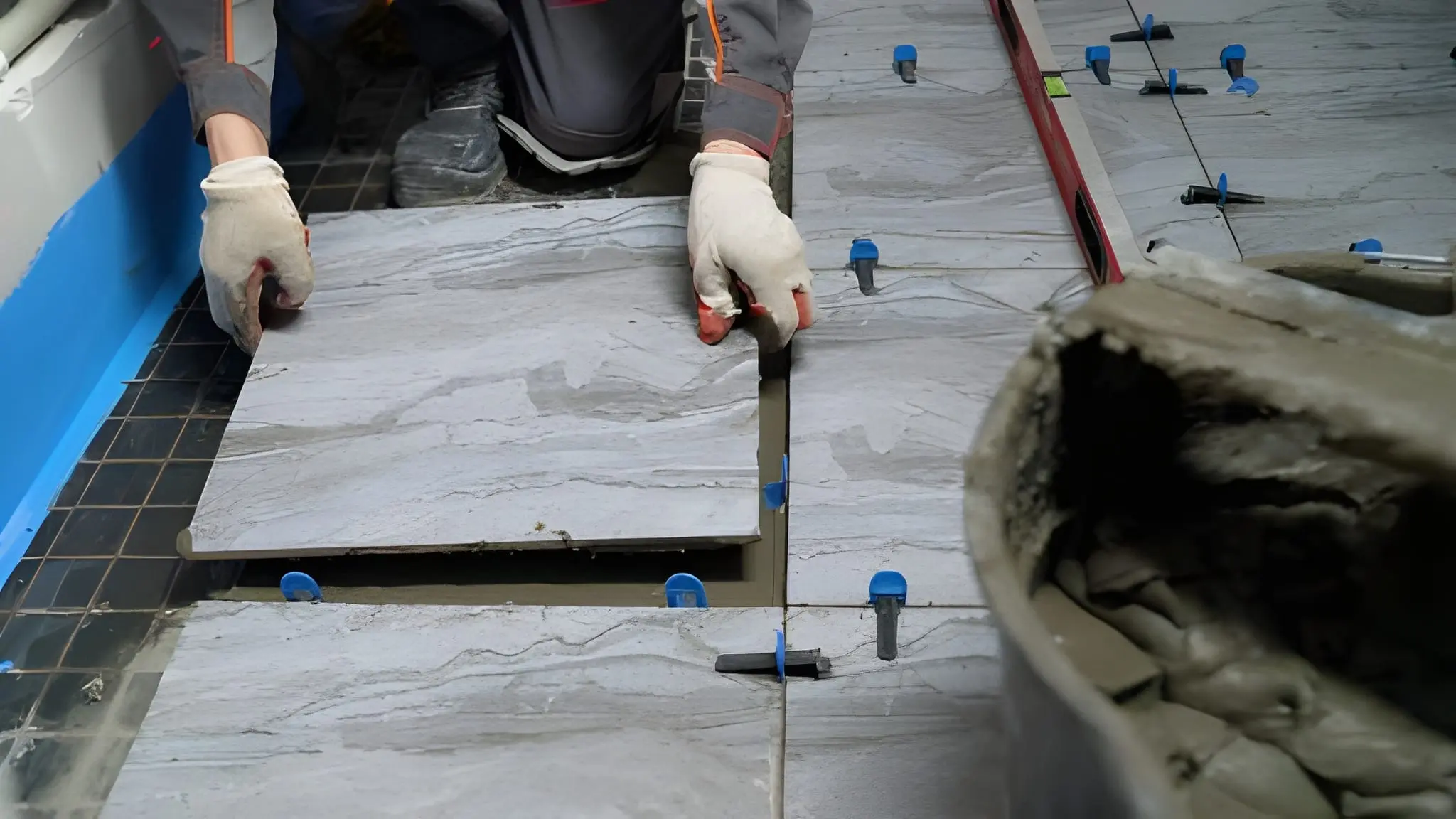Porcelain Tile Flooring: Installation Best Practices for Long-Lasting Results

Porcelain tile flooring is one of the most durable and elegant choices for modern homes and commercial spaces. Known for its strength, water resistance, and timeless appearance, it’s the preferred option for areas that demand both style and performance — from kitchens and bathrooms to living rooms and hallways.
But even the best porcelain tile flooring can lose its appeal or integrity if it’s not installed properly. The installation process plays a critical role in ensuring your tiles stay beautiful, level, and damage-free for decades. Whether you’re a homeowner planning a renovation or a contractor seeking professional results, understanding and following best practices is key.
Here’s a complete guide to porcelain tile installation — from preparation to finishing touches — to guarantee long-lasting results.
1. Choose High-Quality Tiles from a Trusted Source
The foundation of any successful tile project starts with choosing quality materials. Porcelain tiles vary in grade, density, and finish, so selecting tiles from a reliable supplier ensures consistency and durability.
Look for reputable providers like your local tile store Melbourne that specialize in porcelain products. High-quality tiles are kiln-fired at higher temperatures, making them denser, more resistant to moisture, and less prone to cracking than lower-grade ceramics.
It’s also important to check for manufacturing standards such as slip ratings, color uniformity, and rectified edges — details that significantly impact both aesthetics and performance.
2. Plan Your Layout Before Installation
Before laying any tiles, planning your layout is essential. This step helps you visualize how the tiles will look once installed and ensures minimal waste.
Start by measuring the space accurately and marking a central reference line to maintain symmetry. Dry-lay a few tiles to see how they align, paying attention to corners and edges. Adjusting the layout early prevents awkward cuts or uneven patterns later.
If your space features natural lighting or long hallways, consider aligning tiles with the direction of light or the longest wall to create a seamless visual flow.
3. Prepare the Subfloor Properly
A flawless installation begins with a stable and even surface. Any imperfections in the subfloor — such as cracks, dips, or uneven areas — can lead to tile movement or cracking over time.
Make sure the subfloor is clean, level, and dry. For concrete floors, fill cracks and use a self-leveling compound if necessary. For wooden subfloors, ensure there’s adequate support and no flexing. Installing a cement backer board or uncoupling membrane provides added stability and prevents moisture from seeping through.
Neglecting this step is one of the most common causes of tile failure, so never skip it.
4. Use the Right Adhesive and Tools
Not all adhesives are created equal. Porcelain tiles are denser and less porous than ceramic tiles, which means they require a high-quality polymer-modified thin-set mortar for proper bonding.
Choose the right trowel size based on your tile dimensions — typically a 10mm notched trowel for large-format tiles. Spread adhesive evenly using a consistent angle, then back-butter each tile (apply a thin layer of mortar to the back) for maximum adhesion.
This dual-application method eliminates air pockets and ensures full contact between tile and surface, which is vital for long-term durability.
5. Follow Correct Installation Techniques
Once your adhesive is ready, begin tiling from your marked center line. Use tile spacers to maintain consistent grout joints and avoid uneven gaps.
For large-format porcelain tiles, use a leveling system to prevent lippage — the uneven height between adjacent tiles. Tap tiles gently with a rubber mallet to ensure proper alignment and eliminate air bubbles.
Work in small sections to prevent the mortar from drying out before tiles are laid. Always check your work with a spirit level every few rows to maintain accuracy.
6. Account for Expansion and Movement
All flooring materials expand and contract slightly due to temperature and humidity changes. Without proper planning, this natural movement can cause cracking or lifting.
Include expansion joints around the perimeter of the room and at regular intervals for larger areas. Avoid grouting tight against walls or fixtures — instead, fill these spaces with a flexible silicone sealant.
This simple step allows your tiles to adjust naturally without compromising structural integrity.
7. Grouting with Precision
Grouting not only enhances appearance but also protects the tiles from moisture and dirt buildup. Choose a high-quality grout that complements your tile color and intended use. For porcelain tiles in high-moisture areas like bathrooms, epoxy grout provides superior water resistance and durability.
Apply grout using a rubber float at a 45-degree angle, pressing it into the joints. Once the grout begins to set, wipe away excess with a damp sponge, being careful not to remove too much from the joints.
After the grout has fully cured, apply a penetrating sealer if needed — especially for light-colored grout that may stain over time.
8. Clean and Seal for Protection
Once installation is complete, clean the surface thoroughly to remove adhesive residue or haze. Avoid acidic cleaners, as they can damage the grout and tile finish.
Sealing may not be necessary for glazed porcelain tiles, but it’s often recommended for unglazed varieties to enhance stain resistance and make cleaning easier. For natural-looking finishes, use a matte sealant that preserves the tile’s texture and tone.
Regular maintenance — such as sweeping and mopping with pH-neutral cleaners — will keep your tiles looking new for years.
9. Ensure Professional Installation for Large Areas
While smaller projects like kitchen splashbacks or small bathrooms might seem manageable as DIY tasks, large porcelain floor installations require professional expertise.
Experienced installers understand how to handle heavy, large-format tiles, maintain even spacing, and achieve perfect alignment. They also have access to professional-grade tools, which are essential for cutting thick porcelain without chipping.
Hiring qualified installers not only saves time but also guarantees lasting quality and a flawless finish — preventing costly rework later.
10. Common Mistakes to Avoid
Even with the right materials, small errors can lead to long-term problems. Avoid these common installation mistakes:
- Skipping subfloor preparation or waterproofing
- Using the wrong adhesive or grout
- Not allowing enough drying time between steps
- Ignoring tile orientation and layout
- Forgetting expansion joints or flexible sealants
Attention to detail at every stage is what separates a quick installation from a truly professional one.
Why Choose RMG Tiling & Bullnose
When it comes to expert porcelain tile installation, RMG Tiling & Bullnose is a trusted name in Melbourne’s tiling industry. Their experienced team specializes in both residential and commercial projects, offering end-to-end services — from product selection and layout design to installation and finishing.
They combine technical skill with an eye for design, ensuring every project achieves aesthetic appeal, precision, and durability. Whether you’re updating your bathroom, kitchen, or entire flooring system, their workmanship guarantees lasting results that elevate your space.
Final Thoughts
Porcelain tile flooring is a long-term investment that adds beauty, value, and durability to any space. But achieving professional, lasting results depends heavily on proper installation.
By choosing high-quality tiles, preparing surfaces carefully, using the right materials, and following best practices, you can enjoy flawless floors that stand the test of time.
Whether you’re renovating a home or managing a commercial project, partnering with experienced professionals ensures your porcelain tiles perform beautifully for decades — combining style, strength, and sophistication in every square metre.
Also Read-Planning a Hair Show Exhibit: Tips for Standing Out in a Highly Visual Event Category



